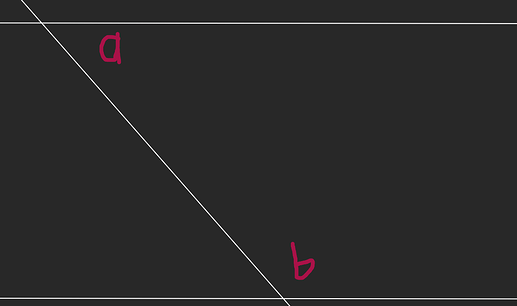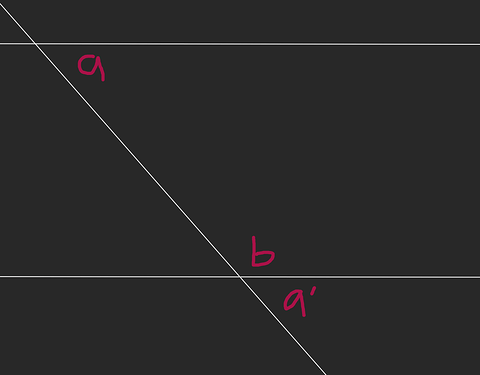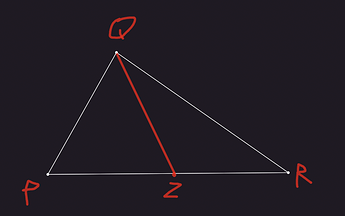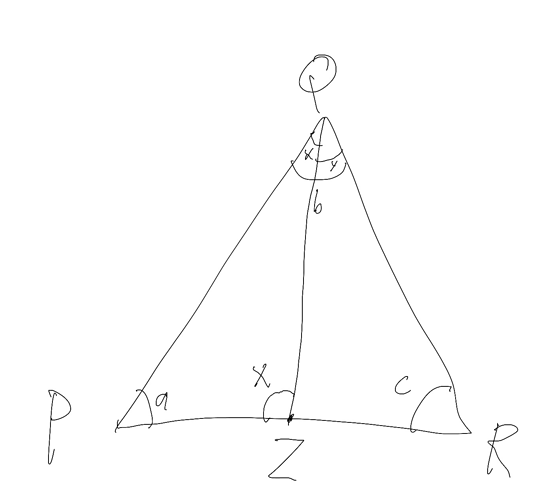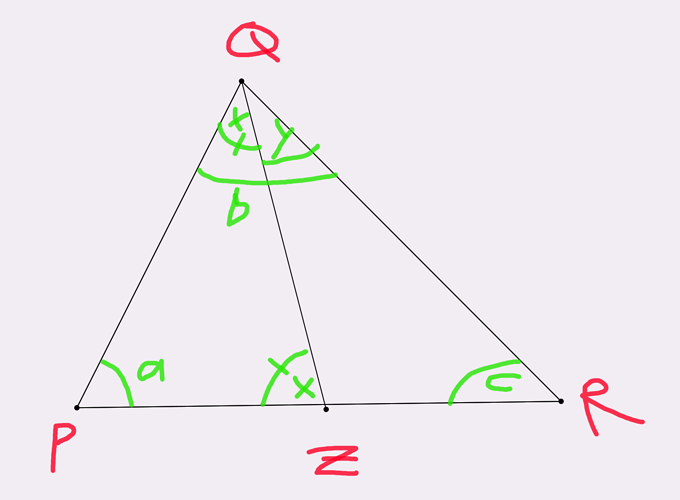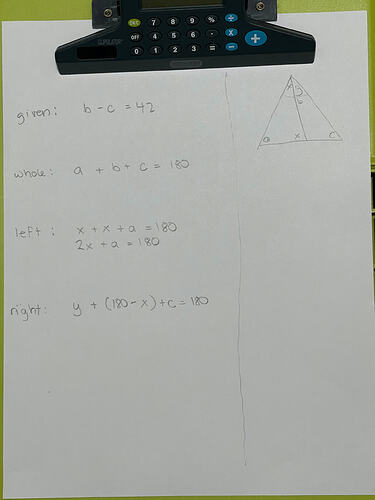Another problem I found tricky. Comments/crits about how I approached the problem, good ways to think about it, and so on, are welcome. I talk about their solution a bit at the end.
2.46
IF a transversal cuts two lines such that the same-side interior angles sum to 180°,
THEN the two lines are parallel.
Suppose a and b are the same-side interior angles
Let’s briefly consider what the situation would be like if the lines were parallel. This is not my proof or answer to the question - this is just setting out some relevant background.
The transversal would cut the angles equally on both lines, which means that the corresponding angle for a on the other parallel line, which I’ve labeled a’, will have the same value as a.
Since a’ appears on a line with b, a’ + b (and a + b) must equal 180°. So a and b are supplementary.
Let’s suppose that the transversal cuts the two lines in such a way that the same-side interior angles are supplementary, and see if that can happen with non-parallel lines. In other words, let’s change our diagram a bit and suppose that our lines meet.
If the lines were not parallel, then could the same-side interior angles ∠A & ∠B be supplementary?
So suppose we reason that a’ + b = 180, and thus a + b must equal 180°. But if we follow that reasoning, we have an issue - a + b appear inside a triangle in our new diagram, and if they sum to 180°, that leaves no angle left over for the remaining angle! So if a transversal cuts two lines such that the same-side interior angles are supplementary, it cannot do so for non-parallel lines (for lines that ever meet) - the lines must be parallel!
I wanted to make sure this worked logically:
IF it is not the case that two lines are parallel,
THEN it is not the case that the same side interior angles of the two lines are supplementary.
(A = two lines are parallel, B = same side interior angles of the two lines are supplementary.)
Logical statement of the above with variables:
IF ¬ A,
then ¬ B.
contrapositive:
IF B,
THEN A.
Replacement of the variables in the contrapositive with their referents:
IF same side interior angles of the two lines are supplementary, then the two lines are parallel.
They had a different approach:
Their approach:
Cuz ∠HBF and ∠FBA are on a straight angle,
I. ∠HBF + ∠FBA = 180°.
Assume:
II. ∠FBA + ∠BAD = 180°.
II can also be represented as ∠HBF = 180° - ∠FBA.
So ∠HBF = 180° - ∠FBA = ∠BAD
When they say that they showed in the text that ∠HBF = ∠BAD implies that \overleftrightarrow {CD} || \overleftrightarrow {EF} , I think they’re referring to their solution to Problem 2.24, where they did a proof by contradiction. They just refer to it here, but I basically did a variation of it in the course of my own answer. So I think our answers are compatible in that regard.
